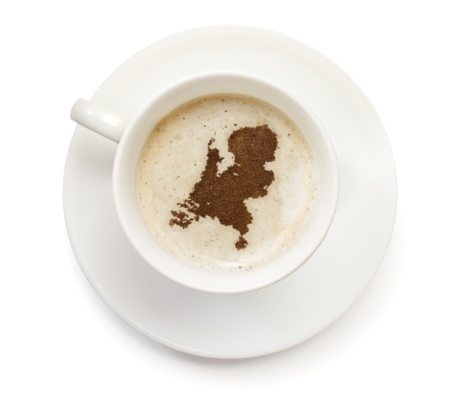Introduction to the treatment method of planting and Development History of single Bean Flavor description varieties in Colombia

Professional barista communication, please pay attention to coffee workshop (Weixin Official Accounts cafe_style )
Colombia Colombia
Population: 47,073,000
Colombia has well-defined growing areas and the impressive variety of coffee they produce. Whether you want round, heavy coffee or crisp, fruity coffee (or something in between), Colombia beans are most likely. Colombia is divided by geographical location, and it is not difficult to find that the coffee in this area has many common characteristics. If you like coffee in one area, other areas will like it as well. Coffee trees in Colombia get double ripening, the main harvest of the year and the second harvest, locally known as "mitaca."
CAUCA
CAUCA Cauca, among others, is best known for its coffee cultivation in Meseta de Popayan, which surrounds the cities of Inza and Popayan. The high altitude of the plateau provides favorable growing conditions, and the proximity to the equator and surrounding mountains protects coffee from the humidity of the Pacific Ocean and the southern trade winds. This creates a very stable climate all year round. In addition, coffee in this area has a significant volcanic soil. Historically, there has been a single rainy season from October to December.
Altitude: 1,700- 2,100 m
Harvest: March-June (main crop), November-December (mitaca crop)
TOLIMA
TOLIMA Tolima, one of the strongholds of Colombia's notorious rebel group, the Revolutionary Armed Forces of Colombia, held control until recently. Tolima has suffered from fighting in recent years, which makes visiting difficult. High quality coffee from the region comes from small farmers growing in very small microplots and exported through cooperatives.
Altitude: 1,200- 1,900 m
Harvest: March-June (main crop) Crops October-December (mitaca)
Variety: 9% Typica, 74% Caturra, 17% Castillo Vera
NARINO
Some of Colombia's highest quality coffees are grown in Nariño and are rated among the most stunning and complex. Growing coffee in many areas of these high-altitude areas is a challenge and coffee trees can suffer from leaf blight. However, Nariño is close enough to the equator that the climate is suitable for growing coffee trees. The vast majority of Nariño's 40,000 producers are smallholders, each growing less than 2 hectares (4.4 acres). Many people form groups and institutions to support each other and interact with the FNC. In fact, the average farm size is less than 1 hectare (2.2 acres), and only 37 producers own more than 5 hectares (11 acres) of land in the area.
Altitude: 1,500- 2,300 m (4,900- 7,500 ft)
Harvest: April-June Variety: 54% Typica, 29% Caturra, 17% Castillo
HUILA
Willa has a combination of excellent soil and geographical advantages for growing coffee, and some of the most complex, fruit-based Colombia coffee comes from here. There are more than 70,000 coffee growers in the area, covering more than 16000 hectares (39500 acres).
Altitude: 1,250- 2,000 m
Harvest: September to December (main crop) April to May (mitaca crop)
Main varieties: 11% Typica, 75% Caturra, 14% Castillo
Important Notice :
前街咖啡 FrontStreet Coffee has moved to new addredd:
FrontStreet Coffee Address: 315,Donghua East Road,GuangZhou
Tel:020 38364473
- Prev

Introduction of Panamanian single bean flavor description variety planting development history production area treatment method
For the exchange of professional baristas, please follow the coffee workshop (Wechat cafe_style) Panama Panamanian population: 3406000 coffee in Panama is defined by how coffee is produced, not by geography. In the past, when coffee was widely cultivated, when the areas listed below were small and tightly clustered, the coffee beans could be combined into one unit.
- Next

Introduction to the treatment method of planting and Development History of single Bean Flavor in Guatemala
For the exchange of professional baristas, please follow the coffee workshop (Wechat official account cafe_style) Guatimala Guatemalan population: 15438000 Guatemala has been more successful in defining its coffee priority areas than most countries and has developed its market with very different sales models.
Related
- Does Rose Summer choose Blue, Green or Red? Detailed explanation of Rose Summer Coffee plots and Classification in Panamanian Jade Manor
- What is the difference between the origin, producing area, processing plant, cooperative and manor of coffee beans?
- How fine does the espresso powder fit? how to grind the espresso?
- Sca coffee roasting degree color card coffee roasting degree 8 roasting color values what do you mean?
- The practice of lattes: how to make lattes at home
- Introduction to Indonesian Fine Coffee beans-- Java Coffee producing area of Indonesian Arabica Coffee
- How much will the flavor of light and medium roasted rose summer be expressed? What baking level is rose summer suitable for?
- Introduction to the characteristics of washing, sun-drying or wet-planing coffee commonly used in Mantenin, Indonesia
- Price characteristics of Arabica Coffee Bean Starbucks introduction to Manning Coffee Bean Taste producing area Variety Manor
- What is the authentic Yega flavor? What are the flavor characteristics of the really excellent Yejasuffi coffee beans?

